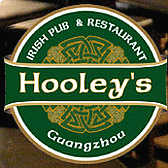|
|
| Chinese
History |
Independent
Kingdoms - Central
|
|
Sichuan Province
and Central China
We feel visual representation is vital to aid explanation,
so have referenced a superb set of maps produced by
our friend Thomas Lessman:
http://www.worldhistorymaps.info/
The Eastern World 550 BC
Courtesy Thomas Lessman - Click to Enlarge:
http://www.worldhistorymaps.info/images/East-Hem_550bc.jpg
The map above is excellent in showing China during the
decline of the Zhou Dynasty and Warring States period.
To the centre of the map you will find the two main
protagonists for millennia side by side - The Qin and
The Jin. The cradle of modern Chinese (Han) culture
lies in the southwest corner of Jin territory next to
where number 12 territory (Zhou) points west. This is
the verdant valley where the Yellow and Yangtze rivers
come very close together. All Chinese history normally
begins in this small area.
Circa 220 BC The first Chinese Emperor of the Qin began
construction of the Great Wall of China in order to
keep the constant threat from the north in check. By
this time the Xiongnu had moved west, but many nomadic
tribes persisted to view China's vast riches and resources
over millennia. The ebb and flow of humanity in this
region would demand an entire book to itself, so forgive
us for featuring only those of modern importance, and
in particular Han Chinese long time adversary the Jin.
This name appears many times over the course of several
thousand years, and they are also known more recently
as 'Jurchen' and 'Manchu'. The Qing Empire, which was
to be the last great empire of China, was in fact of
direct Jin descent.
Ba Kingdom of ChongQing
Whilst there is little direct evidence from pre-history,
the Ba Kingdom is known to have been flourishing before
2000 BC. Recent tomb excavations have provided new evidence
and a large amount of relics. The Ba Kingdom was called
‘The Jingzhou’ by the Xia, Shang and Zhou
Dynasties. Their area covered what is nowadays Western
Hubei, Chongqing Municipality, and parts of Sichuan
Province. The tombs are dated to between 770 –
221 BC, showing a long period of settlement and civilization.
Standard history dictates that they suddenly disappeared,
but what really happened was that they were conquered
by Qin Shi Huang and then became absorbed into mainstream
Han Chinese culture. The nearby Shu and Chu cultures
of Eastern Hubei and Hunan Provinces provide archaeologists
with insights of trade and cultural exchanges between
these Kingdoms. Many of the Ba relics found in tombs
are of Chu origin.
When we look closer at the Ba we find a very proud and
independent people who were courageous in battle, and
who thought in different ways from their peers. It transpires
that the Ba were not actually conquered by the Qin,
but were appointed as leaders of their own Kingdom,
under Qin auspices. The Romans did likewise with unruly
states and countries, such as ancient Briton. Therefore
under Qin and their successors, the Ba found a late
period of dignity and cultural advancement, before eventually
being swallowed up into what we now know of as China.
Shu Kingdom of Chengdu
Chengdu in Sichuan Province has a separate culture
dating back 5, 000 years which is called The Shu culture.
It was based on old Baodun Town and Jinsha. This later
became the city of Chengdu in 300 BC, at around which
time it could be surmised that their culture was conquered
by the Qin. Certainly, by the time of the very first
Chinese Emperor Qin Shi Huang (221 BC), the Shu were
are vassal state (Probably autonomous)
Chengdu is geographically close to the Ba Kingdom
of Chongqing. By this I mean they are both farming
civilizations on the Eastern rim of the Himalayan
plateau, and separated by about 200 miles of easy
terrain and culture.
Chengdu is very famous in history, being most famous
for their Dujiangyan Irrigation System, which was
classed as a wonder of the world, and is still in
use today (Built pre 300 BC). It also established
the first ever government run school in the whole
world. All this occurred around or before 221 BC.
However, they are also accepted as having very early
and advanced printing techniques, and being the first
place to use paper currency in the whole world. The
Shu were later absorbed into mainstream Han Chinese
culture, but during their tenure, they are noted as
being always open to trade and cultural exchanges
Chu Kingdom of Hubei
By what is not recorded by modern history, I note
the Chu were an independent and advanced culture before
The Zhou Dynasty (1070 BC), and possibly routed millennia
before records begin. I know this because the last
Shang King gave them autonomy before the end of the
Shang Dynasty. You may also note that the Chu repeatedly
defeated the early Zhou Dynasty Rulers at the beginning
of their reign, killing the Zhou King (King Zhou of
Zhou) in the process.
After this they were again free and controlled a
large tract of land to the South of traditional Chinese
history – which spread from Sichuan in the West,
to the Pacific Ocean in the East. They were of the
same era as the Ba of Chongqing, and the Shu of Chengdu;
with whom they had good trading relations. Their sphere
of influence extended South as far as impassable mountain
ranges, which separated them from Guangdong and Yunnan.
To the North lay the powerful Han Dynasties, who they
chose not to attack without reason
The were eventually defeated by Qin Shi Huang in
223 BC (Two years before he defeated the Zhou in 221
BC), and subsequently the Chu culture was absorbed
into the Han Chinese
Zhang Zhang
This powerful Tibetan Kingdom envied the rich pastures
of Sichuan, and took control of large lands to the west
of the Ba, and northwards towards Qinghai and the Taklamakan
dessert into modern day Xinjiang Province..
In the map above these people are referred to as the
Qiang - and it should come as no surprise to you that
if I were to pronounce both words in Mandarin, that
you would have extreme difficulty hearing any difference
between them! The eternal problem is of course 'Anglicisation'.
China Expats dedicated Zhang Zhang page is due for
publication late June 2010 - and basically we simply
need to make a specific map first.
Bon
Meanwhile the Bon continue to develop and co-exist within
Tibetan (Generalisation) society, and spread via their
religion, and their closeness to: Buddhist, Taoist,
and Hindi practices - all of which they predate.
You can find our dedicated Bon page here
A lot more here still to be edited... |
|
This
information is as supplied by Wikipedia, as dated March
2009 or later, and/or other reliable sources.
Maps (Unless stated otherwise)
are provided in association with Thomas Lessman
Web: www.worldhistorymaps.info
Disclaimer:
Please check this information yourself as it may alter
without notice, and whilst we try our best to ensure
it is correct, please do not hold us responsible for
any errors - this is intended as a simple guide only |
|
| Search
this Website |
|
|
| Our
Friends |
Excellent
& Free Online Chinese Language Portal

Thousands of free print-friendly Chinese reference sheets,
tests and revision aids.
Easy Learning format &
Listen to Spoken Words |

Professional
Visa Services
Company
Formation Packages
.
|

British Foreign Office
Resource and Advice for Travellers Worldwide |

Chinese Embassy in UK
Information About China
International Relations
Visa & Consular |

UK Embassy in China
Information About UK
International Relations
Visa & Consular |

|
Excel
Education |
Languages Courses
Study Abroad
Employability
Summer Camps
Information for Teachers |
|

Excellent and relaxing base to
explore this most beautiful of regions in all China! |
Down The Road.org
How We Traded Our Ordinary Lives For a Global Bicycle Touring Adventure

See
Us in China |

Empowering Underprivileged Children
& Their Communities = Worldwide |
 |

Based in Shangri-la,
Yunnan
Province
Dedicated to Exploring Remote Areas of China
Committed to Nature Conservation and Preserving Ethnic
Cultures & Traditions
|

Based in Xi'an,
China's Premiere Travel Agency and International Travel
Community -
Committed to providing:
Best travel deals & current information for all
International Travellers |

Pearl Dragon
Vast
Online Trading and Information Resource
Link goes to Chinese Tourism and Galleries Section |
|